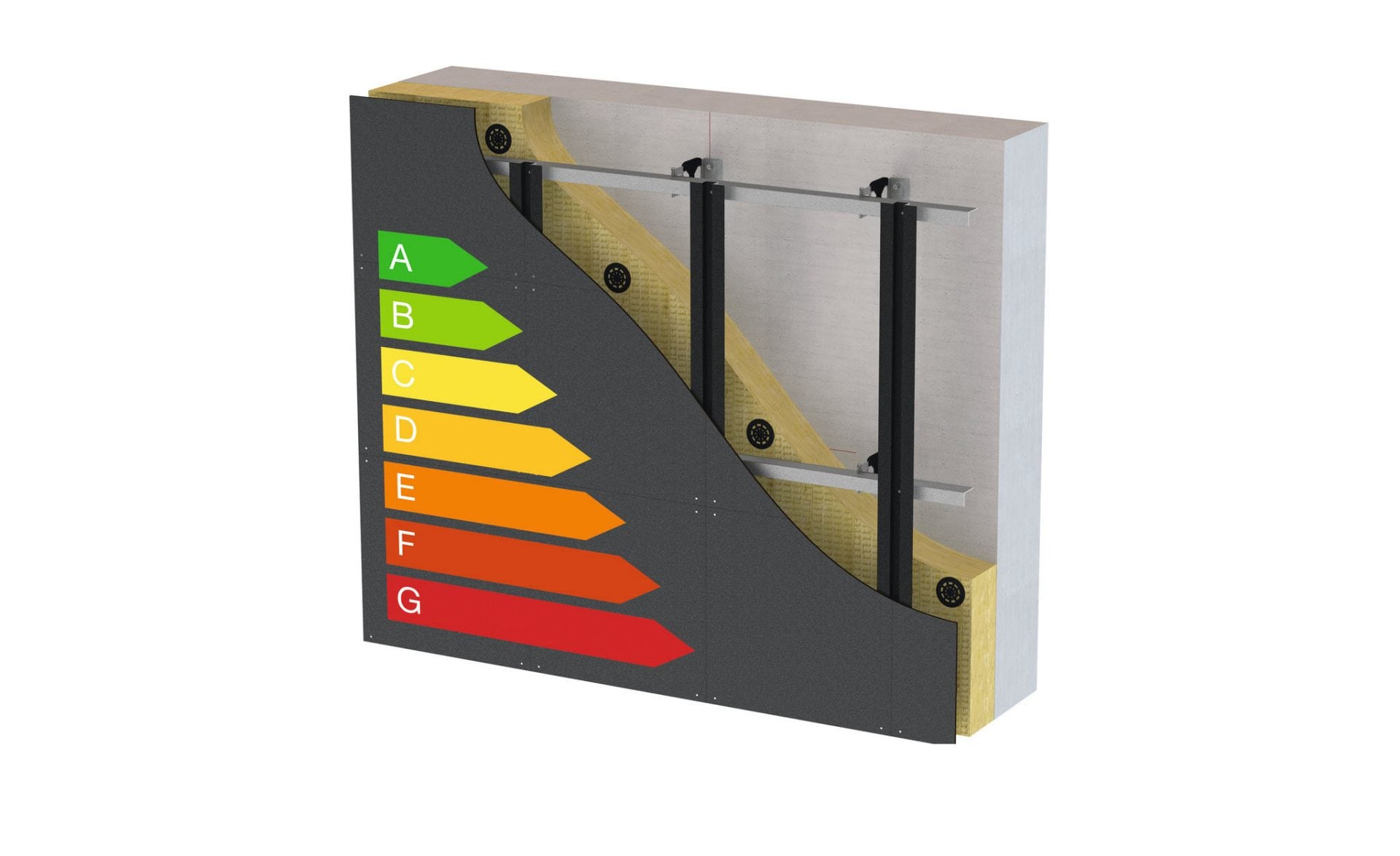Energy efficiency in the building sector
- In Europe, the building sector is responsible for around 40% of energy consumption, with most of the energy used by households in Europe stemming from heating requirements. A key contributing factor to this is that some 75% of buildings are inefficient, highlighting the potential for improvement in energy efficiency.
- In terms of area, the façade is the largest component of a free-standing building. As the interface between inside and outside, façades define the energy efficiency of a building. With ventilated façades, metal substructures can be responsible for up to 50% of the heat loss. This makes a thermally optimized building shell even more important.
The right system solution is crucial

Current building sector requirements regarding thermal efficiency call for a holistic approach of the overall building and its planning. Compliance with current legal regulations has top priority in the planning process.
- The interplay between the substructure and insulation must be considered during planning.
- Our thermal bridge-free and reduced thermal bridge systems minimize the thermal conductivity of the substructure. Systems without thermal bridges (FOX-T systems) are recommended to meet the toughest requirements for energy efficiency. However, this kind of solution is not always necessary to meet legal requirements. For these cases, stainless steel brackets (FOX-VTR) were developed for the reduction of thermal bridges.
- In terms of finding the ideal system solution for your project, we can create a system configuration matching your individual needs, depending on the U-value (heat transfer coefficient) requirement.
Added value for planners and building owners

- An optimally designed façade system maximizes the available usable space of the building. This can have a significant impact on property returns, especially in high-priced regions.
- Maximum energy efficiency might also enable you to obtain building certificates or receive subsidized grants, depending on where you operate.